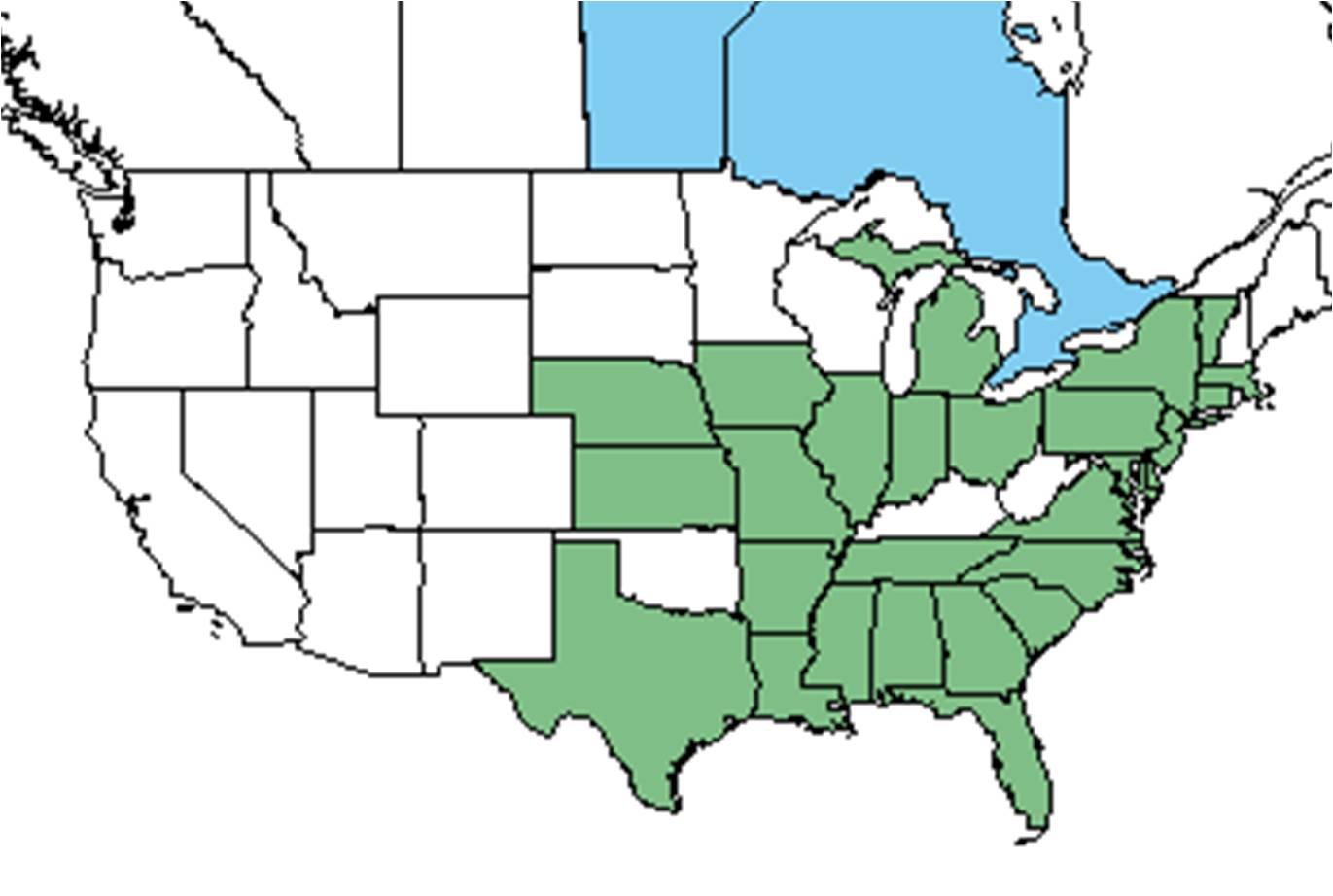Difference between revisions of "Argemone mexicana"
| Line 27: | Line 27: | ||
It is found in peninsular Florida (Weakley 2015). | It is found in peninsular Florida (Weakley 2015). | ||
==Ecology== | ==Ecology== | ||
| − | ===Habitat=== | + | ===Habitat===<!--Natural communities, human disturbed habitats, topography, hydrology, soils, light, fire regime requirements for removal of competition, etc.--> |
In the Coastal Plain, ''A. mexicana'' can be found in loamy soils of mesic woodlands and in disturbed areas, such as sandy roadsides and citrus groves (FSU Herbarium; Weakley 2015). It is native to peninsular Florida (Weakley 2015). | In the Coastal Plain, ''A. mexicana'' can be found in loamy soils of mesic woodlands and in disturbed areas, such as sandy roadsides and citrus groves (FSU Herbarium; Weakley 2015). It is native to peninsular Florida (Weakley 2015). | ||
| − | ===Phenology=== | + | ===Phenology===<!--Timing off flowering, fruiting, seed dispersal, and environmental triggers. Cite PanFlora website if appropriate: http://www.gilnelson.com/PanFlora/ --> |
It flowers from April to May, and sometimes in August (Weakley 2015). | It flowers from April to May, and sometimes in August (Weakley 2015). | ||
<!--===Seed dispersal===--> | <!--===Seed dispersal===--> | ||
<!--===Seed bank and germination===--> | <!--===Seed bank and germination===--> | ||
| − | <!--===Fire ecology===--> | + | <!--===Fire ecology===--><!--Fire tolerance, fire dependence, adaptive fire responses--> |
===Pollination=== | ===Pollination=== | ||
The following Hymenoptera families and species were observed visiting flowers of ''Argemone mexicana'' at Archbold Biological Station (Deyrup 2015): | The following Hymenoptera families and species were observed visiting flowers of ''Argemone mexicana'' at Archbold Biological Station (Deyrup 2015): | ||
| Line 44: | Line 44: | ||
Halictidae: ''Lasioglossum puteulanum'' | Halictidae: ''Lasioglossum puteulanum'' | ||
| − | <!--===Use by animals===--> | + | <!--===Use by animals===--><!--Herbivory, granivory, insect hosting, etc.--> |
<!--===Diseases and parasites===--> | <!--===Diseases and parasites===--> | ||
<!--==Conservation and Management==--> | <!--==Conservation and Management==--> | ||
Revision as of 15:27, 2 March 2016
Common names: Mexican Pricklypoppy, Mexican poppy
| Argemone mexicana | |
|---|---|

| |
| Photo by Keith Bradley, Atlas of Florida Vascular Plants | |
| Scientific classification | |
| Kingdom: | Plantae |
| Division: | Magnoliophyta - Flowering plants |
| Class: | Magnoliopsida - Dicotyledons |
| Order: | Papaverales |
| Family: | Papaveraceae |
| Genus: | Argemone |
| Species: | A. mexicana |
| Binomial name | |
| Argemone mexicana L. | |

| |
| Natural range of Argemone mexicana from USDA NRCS Plants Database. | |
Contents
Taxonomic notes
Synonym: A. leiocarpa Greene The Flora of North America.
Description
A description of Argemone mexicana is provided in The Flora of North America.
Distribution
It is found in peninsular Florida (Weakley 2015).
Ecology
Habitat
In the Coastal Plain, A. mexicana can be found in loamy soils of mesic woodlands and in disturbed areas, such as sandy roadsides and citrus groves (FSU Herbarium; Weakley 2015). It is native to peninsular Florida (Weakley 2015).
Phenology
It flowers from April to May, and sometimes in August (Weakley 2015).
Pollination
The following Hymenoptera families and species were observed visiting flowers of Argemone mexicana at Archbold Biological Station (Deyrup 2015):
Apidae: Apis mellifera
Halictidae: Halictus poeyi
Halictidae: Lasioglossum puteulanum
References and notes
Deyrup, M.A. 2015. Database of observations of Hymenoptera visitations to flowers of plants on Archbold Biological Station, Florida, USA.
Florida State University Robert K. Godfrey Herbarium database. URL: http://herbarium.bio.fsu.edu. Last accessed: October 2015. Collectors: Loran C. Anderson, Leon Neel, R.A. Norris, Cecil R. Slaughter. States and Counties: Florida: Leon, Jackson, Polk. Georgia: Thomas. Compiled by Tall Timbers Research Station and Land Conservancy.
Weakley, Alan S. Flora of the Southern and Mid-Atlantic States: Working Draft of 21 May 2015. University of North Carolina Herbarium (NCU). PDF. 464.